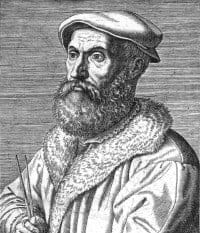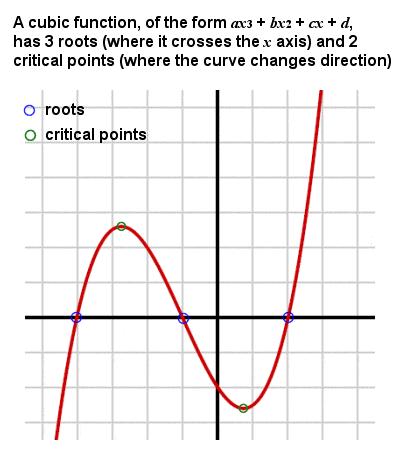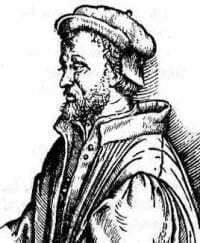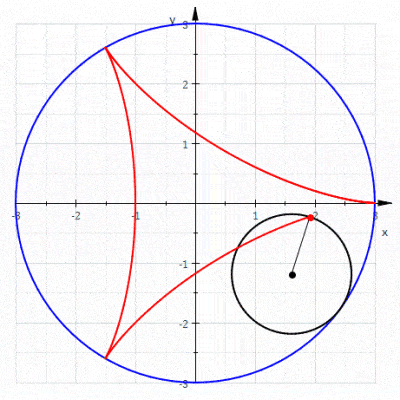NICCOLò TARTAGLIA, GEROLAMO CARDANO & LODOVICO FERRARI
 |
Niccolò Fontana Tartaglia (1499-1557) |
In the Renaissance Italy of the early 16th Century, Bologna University in particular was famed for its intense public mathematics competitions. It was in just such a competition, in 1535, that the unlikely figure of the young Venetian Tartaglia first revealed a mathematical finding hitherto considered impossible, and which had stumped the best mathematicians of China, India and the Islamic world.
Niccolò Fontana became known as Tartaglia (meaning “the stammerer”) for a speech defect he suffered due to an injury he received in a battle against the invading French army. He was a poor engineer known for designing fortifications, a surveyor of topography (seeking the best means of defence or offence in battles) and a bookkeeper in the Republic of Venice.
But he was also a self-taught, but wildly ambitious, mathematician. He distinguised himself by producing, among other things, the first Italian translations of works by Archimedes and Euclid from uncorrupted Greek texts (for two centuries, Euclid‘s “Elements” had been taught from two Latin translations taken from an Arabic source, parts of which contained errors making them all but unusable), as well as an acclaimed compilation of mathematics of his own.
Cubic Equations
 |
Cubic equations were first solved algebraically by del Ferro and Tartaglia |
Tartaglia’s greates legacy to mathematical history, though, occurred when he won the 1535 Bologna University mathematics competition by demonstrating a general algebraic formula for solving cubic equations (equations with terms including x3), something which had come to be seen by this time as an impossibility, requiring as it does an understanding of the square roots of negative numbers. In the competition, he beat Scipione del Ferro (or at least del Ferro’s assistant, Fior), who had coincidentally produced his own partial solution to the cubic equation problem not long before. Although del Ferro’s solution perhaps predated Tartaglia’s, it was much more limited, and Tartaglia is usually credited with the first general solution. In the highly competitive and cut-throat environment of 16th Century Italy, Tartaglia even encoded his solution in the form of a poem in an attempt to make it more difficult for other mathematicians to steal it.
Tartaglia’s definitive method was, however, leaked to Gerolamo Cardano (or Cardan), a rather eccentric and confrontational mathematician, doctor and Renaissance man, and author throughout his lifetime of some 131 books. Cardano published it himself in his 1545 book “Ars Magna” (despite having promised Tartaglia that he would not), along with the work of his own brilliant student Lodovico Ferrari. Ferrari, on seeing Tartaglia’s cubic solution, had realized that he could use a similar method to solve quartic equations (equations with terms including x4).
In this work, Tartaglia, Cardano and Ferrari between them demonstrated the first uses of what are now known as complex numbers, combinations of real and imaginary numbers of the type a + bi, where i is the imaginary unit √-1. It fell to another Bologna resident, Rafael Bombelli, to explain, at the end of the 1560’s, exactly what imaginary numbers really were and how they could be used.
 |
Gerolamo Cardano (1501-1576) |
Although both of the younger men were acknowledged in the foreword of Cardano’s book, as well as in several places within its body, Tartgalia engaged Cardano in a decade-long fight over the publication. Cardano argued that, when he happened to see (some years after the 1535 competition) Scipione del Ferro’s unpublished independent cubic equation solution, which was dated before Tartaglia’s, he decided that his promise to Tartaglia could legitimately be broken, and he included Tartaglia’s solution in his next publication, along with Ferrari’s quartic solution.
Ferrari eventually came to understand cubic and quartic equations much better than Tartaglia. When Ferrari challenged Tartaglia to another public debate, Tartaglia initially accepted, but then (perhaps wisely) decided not to show up, and Ferrari won by default. Tartaglia was thoroughly discredited and became effectively unemployable.
Poor Tartaglia died penniless and unknown, despite having produced (in addition to his cubic equation solution) the first translation of Euclid’s “Elements” in a modern European language, formulated Tartaglia’s Formula for the volume of a tetrahedron, devised a method to obtain binomial coefficients called Tartaglia’s Triangle (an earlier version of Pascal‘s Triangle), and become the first to apply mathematics to the investigation of the paths of cannonballs (work which was later validated by Galileo’s studies on falling bodies). Even today, the solution to cubic equations is usually known as Cardano’s Formula and not Tartgalia’s.
Ferrari, on the other hand, obtained a prestigious teaching post while still in his teens after Cardano resigned from it and recommended him, and was eventually able to retired young and quite rich, despite having started out as Cardano’s servant.
Cardano himself, an accomplished gambler and chess player, wrote a book called “Liber de ludo aleae” (“Book on Games of Chance“) when he was just 25 years old, which contains perhaps the first systematic treatment of probability (as well as a section on effective cheating methods). The ancient Greeks, Romans and Indians had all been inveterate gamblers, but none of them had ever attempted to understand randomness as being governed by mathematical laws.
 |
The circles used to generate hypocycloids are known as Cardano Circles |
The book described the – now obvious, but then revolutionary – insight that, if a random event has several equally likely outcomes, the chance of any individual outcome is equal to the proportion of that outcome to all possible outcomes. The book was far ahead of its time, though, and it remained unpublished until 1663, nearly a century after his death. It was the only serious work on probability until Pascal‘s work in the 17th Century.
Cardano Circles
Cardano was also the first to describe hypocycloids, the pointed plane curves generated by the trace of a fixed point on a small circle that rolls within a larger circle, and the generating circles were later named Cardano (or Cardanic) circles.
The colourful Cardano remained notoriously short of money thoughout his life, largely due to his gambling habits, and was accused of heresy in 1570 after publishing a horoscope of Jesus (apparently, his own son contributed to the prosecution, bribed by Tartaglia).
<< Back to 16th Century Mathematics | Forward to 17th Century Mathematics >> |
